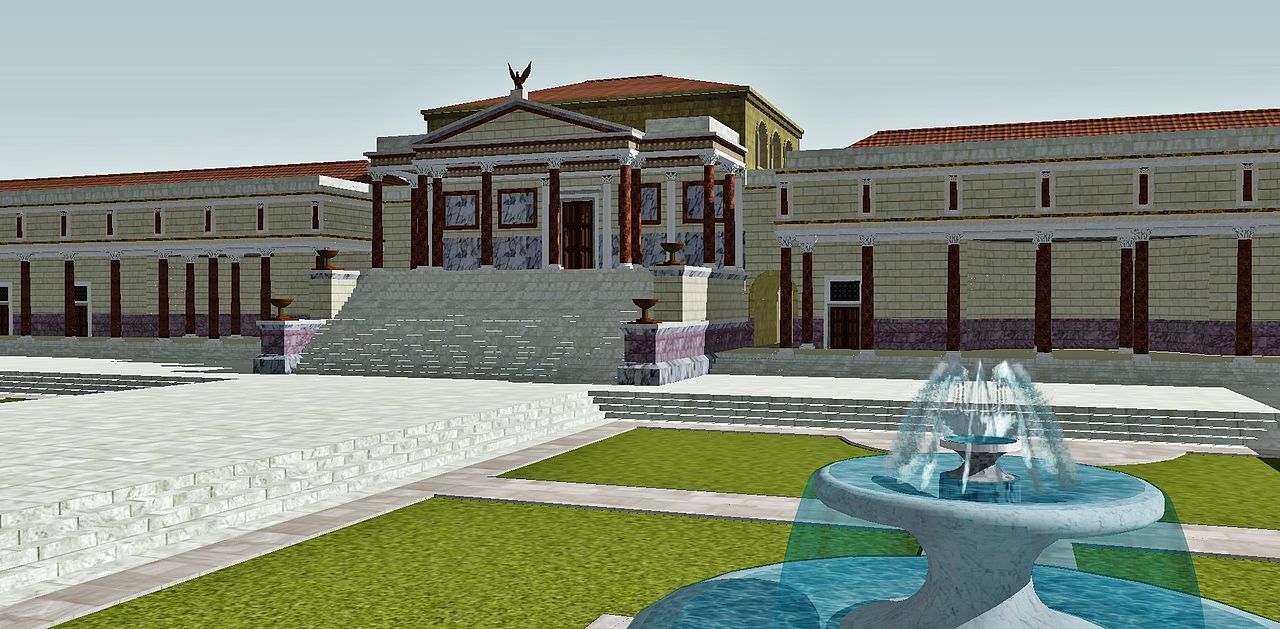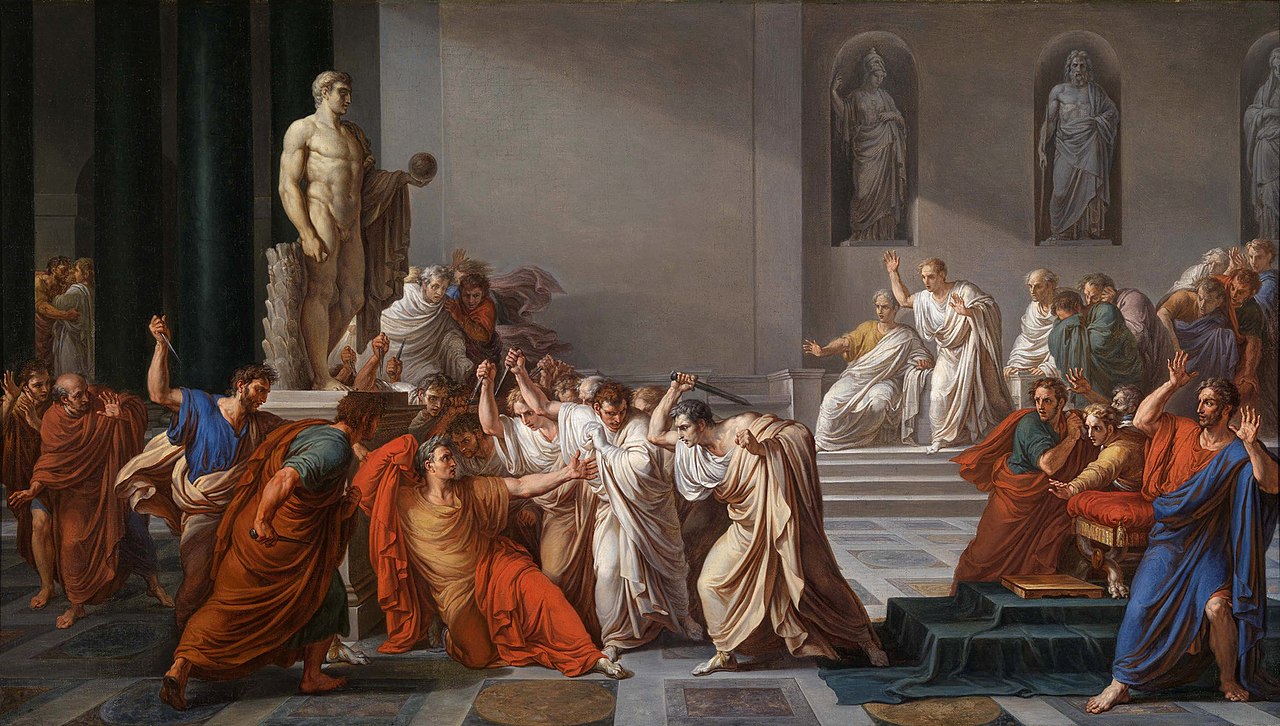Note to JULIUS CAESAR, 3.1.12, 'CAESAR enters the Capitol, the rest following'
This stage direction was written by Edward Capell (1731-81), the first scholarly editor of Shakespeare.
In Capell's time Shakespeare was staged with elaborate scenery, so that there would be a clear visual distinction between the street, where the scene begins, and the Capitol, where the scene ends. Such scenery would make sense of what Cassius says to Artemidorus, "What, urge you your petitions in the street? / Come to the Capitol." However, Shakespeare's text makes no such distinction between the street and the Capitol. This is made clear by the passage in which Popilius says to Cassius, one of the conspirators against Caesar, "I wish your enterprise today may thrive," and then goes to talk to Caesar. When Popilius does that, Brutus and Cassius fear that Popilius is going to reveal their plot to Caesar, but when Popilius talks with Caesar, Caesar smiles, and shows no signs of alarm. Because Caesar is in sight during this whole passage, we see that Caesar cannot "enter the Capitol" and go out of sight.
In any case, the idea of this part of the scene is that Caesar turns away from those in the street who would warn him of his danger — the Soothsayer and Artemidorus — and goes into the Capitol, where he will be killed.
P.S. —There was not a "Capitol" building in Rome, only a "Capitolium " (Capitoline Hill), the location of temples dedicated to Saturn, Jupiter, and other gods. At the time that Caesar was assassinated, the Roman Senate met in the Curia of the Theater of Pompey, and Caesar died at the foot of the statue of Pompey.

Curia of the Theater of Pompey

The Death of Caesar
by
Vincenzo Camuccini


